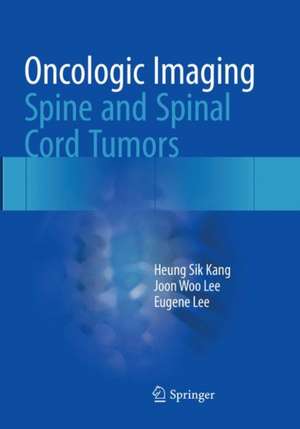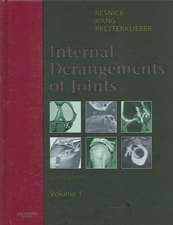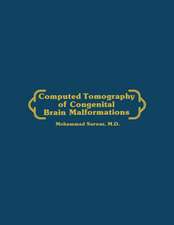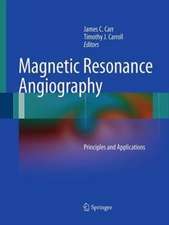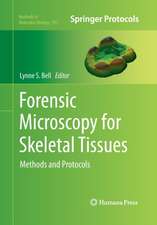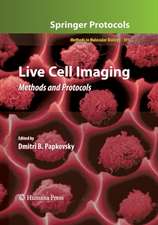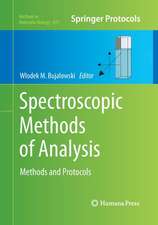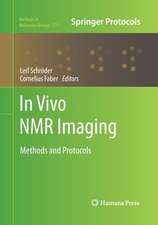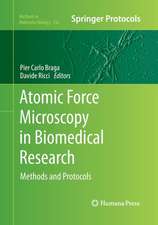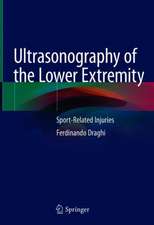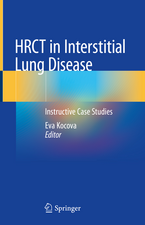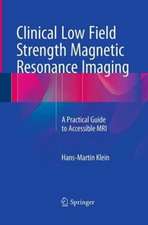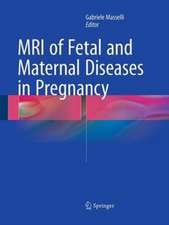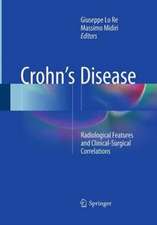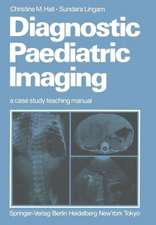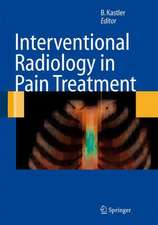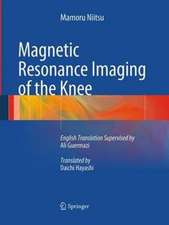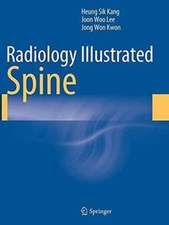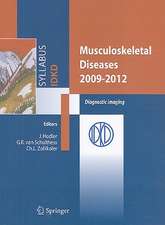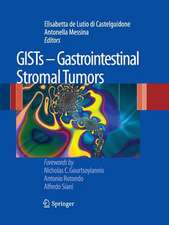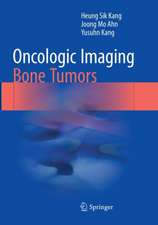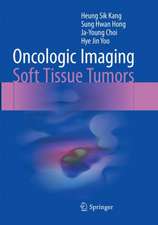Oncologic Imaging: Spine and Spinal Cord Tumors
Autor Heung Sik Kang, Joon Woo Lee, Eugene Leeen Limba Engleză Paperback – 12 dec 2018
| Toate formatele și edițiile | Preț | Express |
|---|---|---|
| Paperback (1) | 773.93 lei 38-44 zile | |
| Springer Nature Singapore – 12 dec 2018 | 773.93 lei 38-44 zile | |
| Hardback (1) | 799.11 lei 38-44 zile | |
| Springer Nature Singapore – 4 apr 2017 | 799.11 lei 38-44 zile |
Preț: 773.93 lei
Preț vechi: 814.66 lei
-5% Nou
Puncte Express: 1161
Preț estimativ în valută:
148.09€ • 155.03$ • 122.54£
148.09€ • 155.03$ • 122.54£
Carte tipărită la comandă
Livrare economică 02-08 aprilie
Preluare comenzi: 021 569.72.76
Specificații
ISBN-13: 9789811357046
ISBN-10: 9811357048
Pagini: 248
Ilustrații: XIV, 248 p. 158 illus., 150 illus. in color.
Dimensiuni: 178 x 254 mm
Ediția:Softcover reprint of the original 1st ed. 2017
Editura: Springer Nature Singapore
Colecția Springer
Locul publicării:Singapore, Singapore
ISBN-10: 9811357048
Pagini: 248
Ilustrații: XIV, 248 p. 158 illus., 150 illus. in color.
Dimensiuni: 178 x 254 mm
Ediția:Softcover reprint of the original 1st ed. 2017
Editura: Springer Nature Singapore
Colecția Springer
Locul publicării:Singapore, Singapore
Cuprins
I. Warm-up: Basic Concepts.- 1. Compartmental approach to spinal tumors.- 1) Intraosseous / extradural / intraduralextramedullary / intramedullary.- 2) Extradural versus intradural tumors.- 3) Intraduralextramedullary versus intramedullary tumors.- 2. Histologic basis of imaging appearances for spinal tumors.- 1) Tumors with fatty component.- 2) Red marrow component.- 3) Tumors with vascular component.- 4) High-cellularity tumors.- 5) Tumors with hemorrhagic component.- 6) Tumors with myxoid component.- 7) Tumors with calcification/ossification.- 8) Tumors with cystic degeneration/necrosis.- 9) Slow growing tumors.- 10) Locally aggressive tumors.- 11) Small round cell tumors.- II. Training: Tumor details.- 1. Bone tumors.- 1) Benign bone tumors.- 2) Malignant bone tumors.- 3) Bone tumor mimics.- 2. Extradural non-osseous tumors.- 1) Benign extradural tumors.- 2) Malignant extradural tumors.- 3) Extradural tumor mimics.- 3. Intraduralextramedullary tumors.- 1) Benign intraduralextramedullary tumors.- 2) Malignant intraduralextramedullary tumors.- 3) Intradural tumor mimics.- 4. Intramedullary tumors.- 1) Benign intramedullary tumors.- 2) Malignant intramedullary tumors.- 3) Intramedullary tumor mimics.- III. Practice: Tips for the correct diagnosis.- 1. Bone tumors.- 1) Incidence-based approach for spinal bone tumors.- 2) Age-based approach for spinal bone tumors.- 3) Location based approach for spinal bone tumors.- 4) Imaging pattern based approach for spinal bone tumors.- (1) Benign appearing osseous lesions.- (2) Sclerotic lesions of the vertebra.- (3) Multi-compartmental lesions.- (4) Relation with cortex.- (5)Common tumors with diffuse spine involvement.- 2. Extradural tumors.- 1) Incidence-based approach for extradural tumors.- 2) Age-based approach for extradural tumors.- 3) Location based approach for extradural tumors.- 4) Imaging pattern based approach for extradural tumors.- (1) Cystic tumors.- (2) Tumors with lobular contours.- (3) Tumors with hemorrhage.- (4) Different enhancement patterns,- 5)Tumors versus Herniated disc.- 3. Intraduralextramedullary (IDEM) tumors.- 1) Incidence-based approach for IDEM tumors.- 2) Age-based approach for IDEM tumors.- 3) Location based approach for IDEM tumors.- 4) Imaging pattern based approach for IDEM tumors.- (1) Tumors with high-cellularity.- (2) Tumors with intra-lesional calcifications.- (3) Hypervascular tumors with AV shunt or superficial siderosis.- (4) Tumors near conusmedullaris or caudaequina.- (5) Multiple IDEM tumors.- 4. Intramedullary (IM) tumors.- 1) Incidence-based approach of IM tumors.- 2) Age-based approach for IM tumors.- 3) Location based approach for IM tumors.- 4) Imaging pattern based approach for IM tumors.- (1) Tumors with cystic change.- (2) Tumors with hemorrhage.- (3) Tumors with surrounding extensive cord edema.- (4) Multiple IM tumors.- 5) IM tumors versus non-tumorous myelopathy.- 5. Infant/childhood spinal tumors.- 1) Bone tumors.- 2) Intraduralextramedullary tumors.- 3) Intramedullary tumors.- 4) Relation with other syndromes.
Recenzii
“Presented as an introductory overview of imaging of common lesions in the spine and spinal cord, this book is also intended to familiarize readers with entities encountered in these regions. … The audience is identified as clinicians and residents. … This book provides nice imaging examples of lesions of the spine and spinal cord. It is a very quick read and may be helpful for a review prior to taking the core examination.” (Tara Catanzano, Doody’s Book Reviews, June, 2017)
Notă biografică
Heung Sik Kang, Department of Radiology, Seoul National University College of Medicine, Seoul National University Bundang Hospital, Seoul, Republic of Korea Joon Woo Lee, Department of Radiology, Seoul National University College of Medicine, Seoul National University Bundang Hospital, Seoul, Republic of Korea Eugene Lee, Department of Radiology, Seoul National University College of Medicine, Seoul National University Bundang Hospital, Seoul, Republic of Korea
Caracteristici
Describes and illustrates the imaging findings in different types of spinal tumor Provides numerous tips that will assist in correct imaging diagnosis Helps to solve diagnostic problems encountered in daily practice Includes a wealth of informative illustrations
